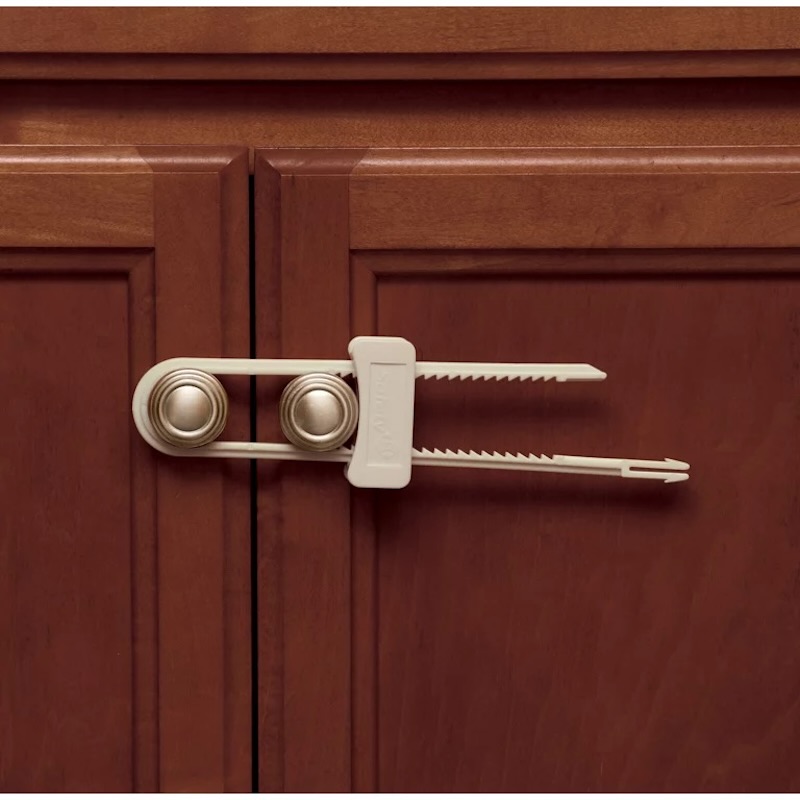Baby Proofing Cabinets: Top Methods to Ensure Safety
by Gary Wade • June 05, 2024
Welcoming a new life into your home is an exhilarating experience, filled with joy and anticipation. However, amidst the excitement, ensuring your living space is secure for your curious little adventurer becomes paramount. Childproofing, particularly securing cabinets and drawers, is a critical step in creating a safe haven for your precious one to thrive and explore without unnecessary risks.
Assessing the Situation: Why Cabinet Safety Matters
As your baby transitions from a snugly bundled newborn to an inquisitive crawler or toddler, the world becomes their playground. Cabinets and drawers, often filled with household essentials and potentially hazardous items, pose significant dangers if left unsecured. Ingesting cleaning products, medications, or sharp objects can lead to severe consequences, making childproofing an essential preventive measure.
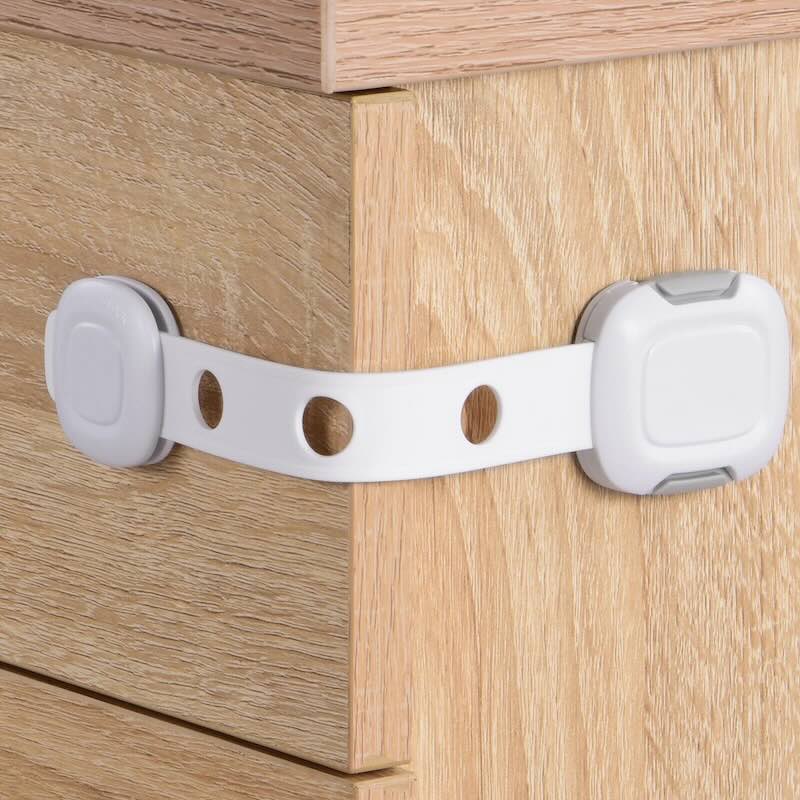
Preparing for Action: A Proactive Approach
While your baby may not be mobile immediately, it's wise to plan and implement cabinet safety measures early on. The first few months can pass in a whirlwind, and before you know it, your little one might surprise you with their newfound mobility. By being proactive, you can ensure a worry-free environment for your child to grow and discover without unnecessary risks.
Establishing a Secure Foundation: Removing Hazardous Items
Before diving into the intricacies of cabinet locks and latches, it's crucial to establish a safe foundation. Start by identifying and removing any potentially dangerous items from lower cabinets and drawers, such as cleaning supplies, medications, sharp utensils, and important documents. This simple step can significantly reduce the risk of accidental harm, even if your child manages to bypass the childproofing measures temporarily.
Assessing Your Needs: A Comprehensive Inventory
To effectively childproof your cabinets, it's essential to take stock of the number and dimensions of the drawers and cabinets in your home. This inventory will inform your choice of locks and latches, ensuring you have the right tools to secure every nook and cranny where your little explorer might venture.
Exploring Cabinet Lock Options: Finding the Perfect Fit
When it comes to childproofing cabinets, several options are available, each with its unique advantages and considerations. Let's explore the most popular choices:
Spring-Loaded Cabinet Locks
Spring-loaded cabinet locks are a versatile and widely used solution for securing cabinets and drawers. These locks are installed on the backside of the cabinet or drawer, preventing the door from opening fully until the spring mechanism is released. Their compatibility with various cabinet types makes them a popular choice among parents.

Magnetic Cabinet Locks
Imagine the frustration of being unable to access your own cabinets due to traditional locks. Magnetic cabinet locks offer a discreet and user-friendly alternative. These locks require adhering one part of the magnet to the door and the other to the frame, keeping the cabinet closed until a key disengages the lock. Not only are they effective, but they also maintain the aesthetic appeal of your kitchen.
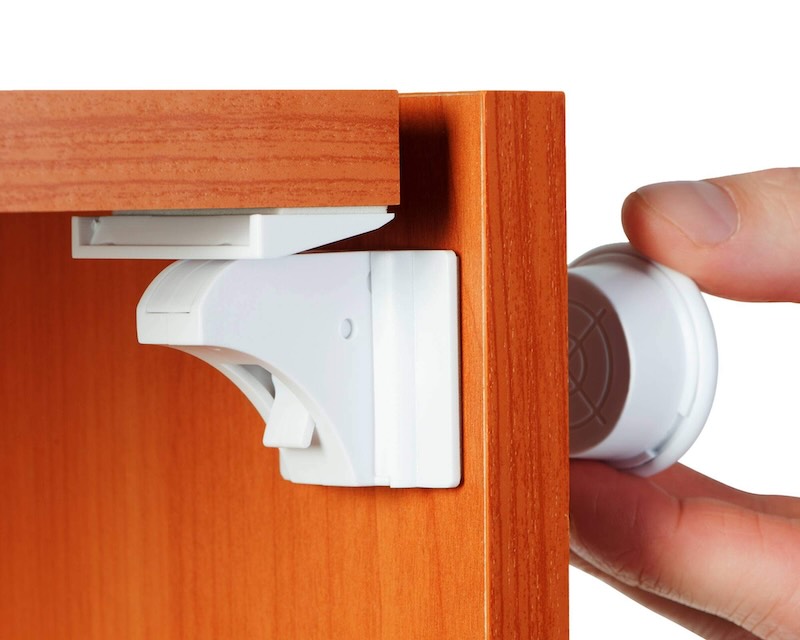
Sliding Cabinet Locks
Tried and true, sliding cabinet locks have been a trusted solution for generations. Their U-shaped design slips around cabinet handles or knobs, securely locking the doors in place. While they may not be the most visually appealing option, they provide reliable protection without being overly complicated for parents to operate.
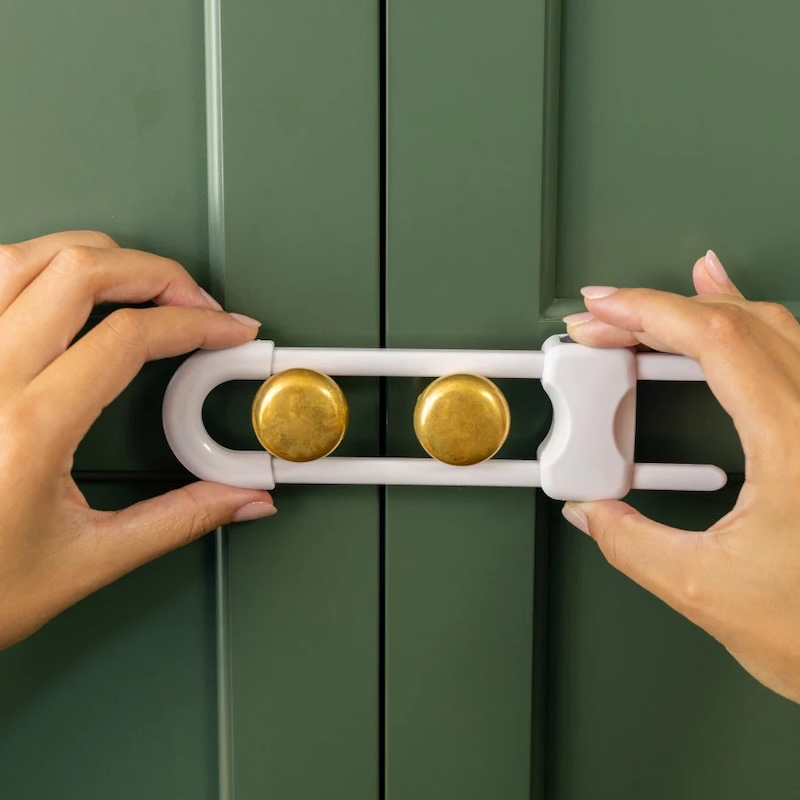
Adhesive Strap Cabinet Locks
If you're seeking a solution that doesn't require drilling, adhesive strap locks might be the perfect choice. These locks feature an adhesive strap with a locking mechanism on either side, securing the cabinet doors shut until the lock is released. They offer effective childproofing without compromising the integrity of your cabinetry.
Evaluating Alternative Solutions: Temporary Measures
In a pinch, when you haven't had the chance to acquire cabinet locks, a temporary solution can be using an elastic band to secure cabinet knobs or handles together. However, it's important to note that this method should not be relied upon long-term, as curious little hands may find ways to circumvent it.
Extending Protection: Childproofing Bathrooms and Beyond
While the kitchen is often the primary focus when childproofing, it's equally crucial to secure cabinets and drawers in other areas of your home. Bathrooms, in particular, can harbor hazardous substances and sharp objects, making it essential to ensure these spaces are off-limits to your little explorer.
Organizing for Safety: Strategically Arranging Cabinet Contents
Even with cabinet locks in place, it's wise to organize your cabinets strategically. Keep any potentially dangerous items, such as chemicals, medications, or sharp objects, towards the back and out of reach. Instead, position frequently used and safe items towards the front, minimizing the risk of your child accessing harmful substances if they manage to bypass the locks temporarily.
Determining the Ideal Timing: When to Install Cabinet Locks
While there's no one-size-fits-all answer, it's generally recommended to have cabinet locks installed by the time your child reaches six months of age, as this is when they often become more mobile. However, some children may develop mobility earlier or later, so it's essential to monitor your child's development and install locks as soon as they start crawling or walking.
Maintaining Vigilance: Regular Safety Checks
Even with the most robust childproofing measures in place, it's crucial to remain vigilant and conduct regular safety checks. Children's development is an ongoing process, and what may have been effective at one stage might need adjustments as they grow and become more adept at problem-solving.
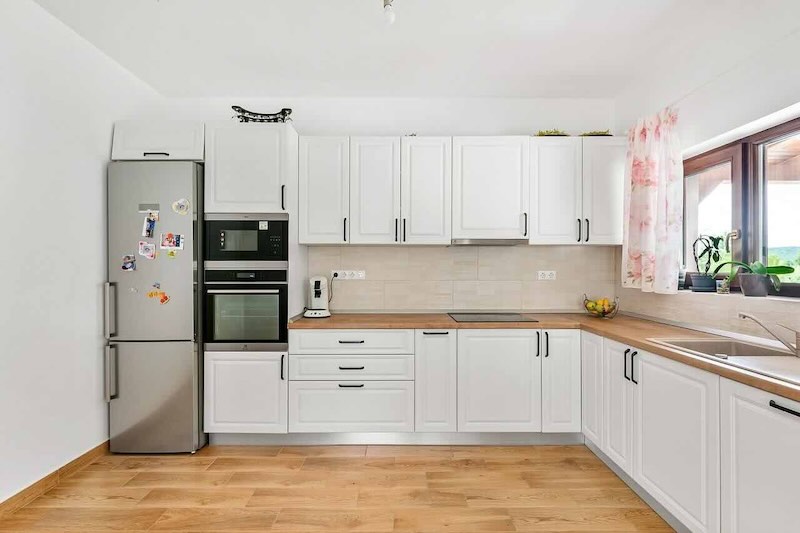
Fostering a Safe Environment: Beyond Childproofing
While childproofing is an essential step in creating a secure home for your little one, it's important to remember that it should never replace adult supervision. Maintain a watchful eye and engage in open conversations with your child about the importance of safety and boundaries.
Frequently Asked Questions
Are there alternative solutions to cabinet locks?
While cabinet locks are the most effective way to prevent children from accessing cabinets, a temporary alternative could be using an elastic band to secure cabinet knobs or handles together. However, this method should not be relied upon long-term, as it may not be as effective against curious children.
Do I need to childproof my bathroom and kitchen cabinets?
Absolutely! Your child's safety and well-being should be your top priority, and that includes keeping them away from toxic chemicals, medications, and sharp objects often found in kitchens and bathroom cabinets. By childproofing these areas, you can have peace of mind knowing your little one is protected from potential harm.
How should I organize my cabinets for safety?
In addition to installing cabinet locks, it's recommended to keep any potentially dangerous items, such as chemicals, medications, or sharp objects, towards the back of the cabinets, making them less accessible to your child. Instead, keep frequently used and safe items towards the front, minimizing the risk of accidental exposure.
At what ages should cabinet locks be used?
There's no definitive age range, as every child's development is unique. However, it's generally advisable to have cabinet locks installed no later than six months of age, as this is when many children begin to become more mobile. At the very latest, cabinet locks should be in place when your child starts crawling or walking.
Conclusion
Childproofing your cabinets is an essential step in creating a safe and secure environment for your little one to explore and grow. By following the guidance provided in this comprehensive guide, you can navigate the various options available, choose the most suitable solutions for your home, and implement them effectively. Remember, while childproofing measures are crucial, they should never replace adult supervision and open communication about safety with your child. Embrace this new chapter with confidence, knowing that your proactive efforts have transformed your living space into a haven where your little explorer can thrive and make cherished memories.
overall rating: my rating: log in to rate




